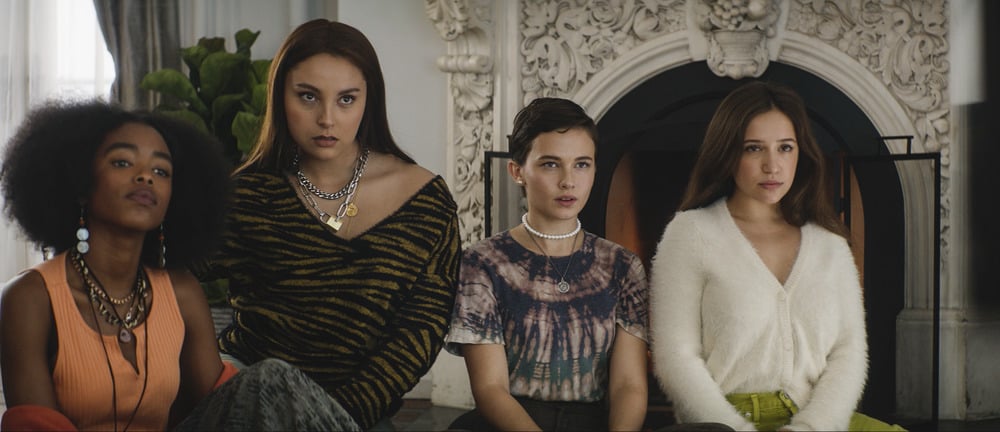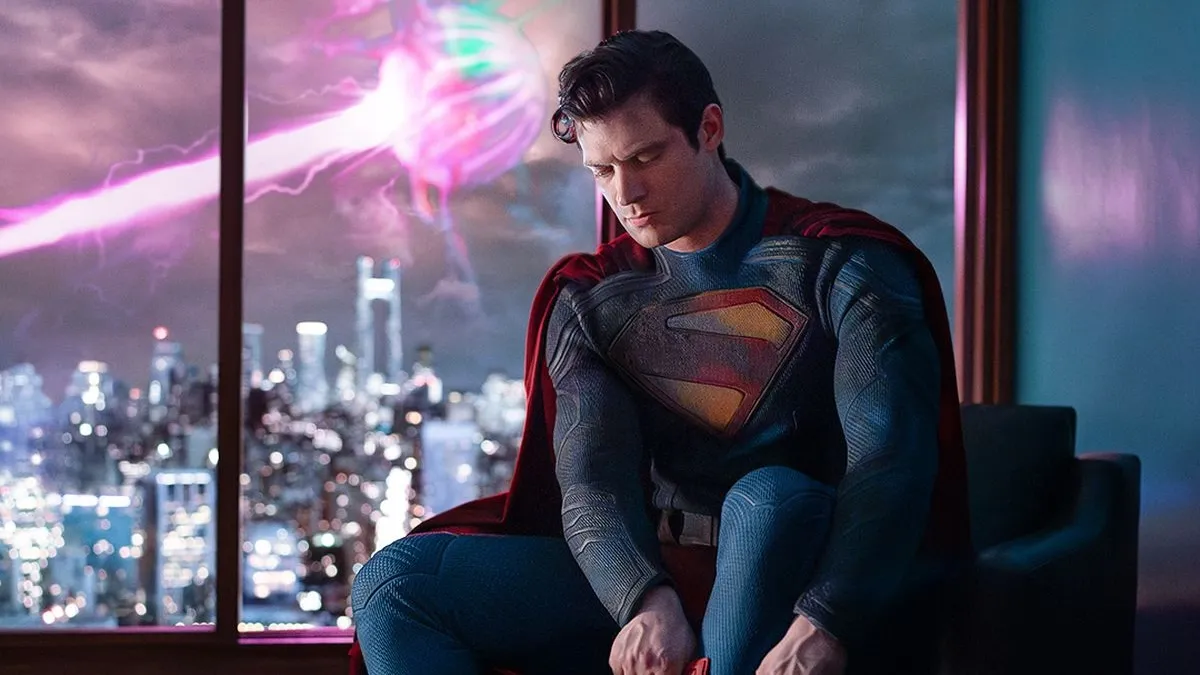***THIS ARTICLE CONTAINS MAJOR SPOILERS FOR THE CRAFT: LEGACY.***
All right. Let’s talk in detail about the end of The Craft: Legacy because, just as the final third of the original Craft was where that movie really stumbled, the final third of The Craft: Legacy is where the sequel achieves its most powerful and feminist moments, including a final moment that addressed a decades-old trauma from the first film.
The climactic battle of The Craft is between Sarah (Robin Tunney), the nice, natural witch who for some reason can control her power (derived from summoning a male deity) better than her less well-off, more marginalized friends, and uses that power to defeat and bind Nancy (Fairuza Balk) who everyone thinks is bad because she killed a few sexual predators (murder is wrong but … well … ). It reduces an otherwise good film to a catfight. And witches and fans have been processing that disappointment for years.
The Craft: Legacy directly refutes all the ideas of its predecessor’s finale. For a second, it does seem like the quartet of witches will be torn asunder, as Tabby (Lovie Simone), Lourdes (Zoe Luna), and Frankie (Gideon Aldon) chose to bind themselves and Lily (Cailee Spaeny) from magic.
But then the first twist comes. Adam (David Duchovny) is the real bad guy and he’s the leader of some sort of cult of toxic masculinity whose goal is to steal power from witches. He does magic too but it’s bad and maybe has something to do with Manon, the deity from the first film. Adam justifies his abuse (and murders!) because he just knows that women can’t handle power and they always go crazy and turn on one another.
Well, bad news, Mulder, because the witches come together and set your ass on fire!
Seeing the girls refuse to bind themselves and each other, owning their magic, and tapping into power that came from them, not some made-up god, as proud weirdos, was a catharsis I didn’t know I needed. It was a deliberate and direct contrast to the tropes of the first film and it was pretty amazing to see these teen witches take on the literal embodiment of patriarchy and power structures designed to keep them under control. There was no regret or ruminating about the ethics of setting a misogynist murderer on fire with magic. It was great!
And then came the final twist: Lily was Nancy’s daughter. I (and probably most everyone) saw this one coming a mile away. It was teased through the final half of the movie that Lilly (born Lilith, so punk rock) was adopted and that her mother had been a powerful witch that couldn’t handle it. While it might have been in doubt whether her mom was Sarah or Nancy, the trailer for the film showed a picture of Nancy and essentially spoiled the big reveal, but that didn’t lessen the impact. Heck, the title is a spoiler.
Confession: when Lily walked into that room and I heard Fairuza Balk’s distinctive voice, I burst into tears even though I knew it was coming. For me and so many other people who have loved The Craft for decades and for whom it was a defining movie of our youths … it was always a double-edged sword. Sure, it was a movie where one witch ended up a winner, but Sarah was never the girl most of us identified with.
For so many of us, it was Nancy, Rochelle, and Bonnie who we saw ourselves in: outcasts and loners. They were the girls who wore what they wanted even if it marked them as “different,” the characters who weren’t white, weren’t wealthy, or whose sexuality earned them scorn. It was these characters that we felt represented by—but then the movie tries to teach them a lesson.
Nancy especially was so charismatic, compelling, and amazing. I wanted to be her, dress like her, and take on power the way she did … but the narrative of The Craft told me that was wrong. Power was only for the pretty, sweet, wealthy, boring girl. It wasn’t for the Nancys of the world, those nasty, difficult women. Nancy ended The Craft scarred and powerless, strapped to a bed in a mental hospital, drugged and delirious.
It hurt. Because it was the real fate of so many women over the centuries to be thrown into mental institutions for being “hysterical” or “crazy” or any other word they used to describe women who didn’t fit. It hurt because once again, the Wicked Witch was defeated. The Craft didn’t burn their witches, but it only allowed one narrow type of girl to remain a witch and powerful at the end.
The Craft: Legacy undoes that. When the girls unbind themselves and Lily, they refuse to repeat the mistake of the past. Adam very clearly tells Lily that he knew Nancy and wanted her power too. He reframes the entire narrative of the original movie and therefore makes his defeat at the end not just a victory for Lily and her coven, but a vindication for Nancy Downs, 25 years in the making.
So the final seconds of the movie, when Nancy gets to meet her daughter, who has become a powerful witch and woman on her own, and who has broken the cycle that left Nancy trapped? I let out a sob that it felt like I had been holding in for 24 years. And then a scream when the credits rolled a second later.
The Craft: Legacy is an imperfect movie for sure. It’s too short and doesn’t give enough character or story development to anyone, except for the cis white, straight presenting girl at its center and that’s a problem, even though the film tried really hard to be more inclusive. If there had been about 45 more minutes of movie to give everyone and every story more room to be and breathe, The Craft: Legacy could have gone from pretty good to great.
I honestly hope we get more in this world, but even if this is the end for these characters, I’m so happy that Nancy finally got her moment and that this coven came together, in the end, to stand up for their power.
(image: Sony/Columbia Pictures)
Want more stories like this? Become a subscriber and support the site!
—The Mary Sue has a strict comment policy that forbids, but is not limited to, personal insults toward anyone, hate speech, and trolling.—









